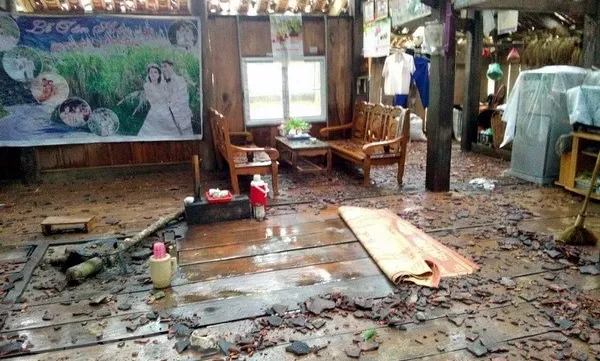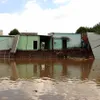Four to six storms to hit VN


|
| A house in Xuân La Commune of Bắc Kạn Province was destroyed by hail and strong winds. About four to six storms are likely to appear in Việt Nam this year. |
HÀ NỘI – About 12-14 storms and low tropical pressures systems are likely to appear in the South China Sea this year, and four to six storms will hit Việt Nam, according to the National Centre for Hydro-Meteorological Forecasting.
Storms and low atmospheric pressure systems tend to occur more in the north at the beginning of the rainy season and move to the south in the late months of 2018. Natural disasters are likely to severely affect the central region.
It is forecast that hot weather on a large scale in the north and the central regions will appear later this year and it is expected to not last as long and be as severe as in 2017, the centre said.
Severe flooding is also likely to hit the Cửu Long Mekong Delta.
At the workshop on measures to cope with disasters in 2018 held yesterday in Hà Nội, head of the Việt Nam Red Cross (VNRC), Nguyễn Thị Xuân Thu, said the group had prepared more than VNĐ100 billion (US$4.44 million) in aid, including relief goods such as essential household items, house repair kits, tents, water filters and water purifiers.
At the workshop, delegates also exchanged and shared co-ordination and preparation models for the Government and VNRC to respond to disasters this year.
VNRC also summed up the storm relief programme for storm No 12 (Typhoon Damrey) in 2017 with great support from international partners.
The programme had a total budget of more than VNĐ82.2 billion to support more than 33,600 households which were seriously affected in provinces such as Khánh Hòa, Phú Yên, Bình Định, Quảng Nam, Quảng Ngãi, Thừa Thiên-Huế and Đắk Lắk.
On this occasion, VNRC was awarded a certificate of merit by the Prime Minister for outstanding achievements in response to storms No 10 and 12 in 2017.
More than 578,400 people were supported by the VNRC last year with an amount of VNĐ240 billion.
In 2017, Việt Nam was hit by 20 storms and low atmospheric pressure systems. – Khanh
Tags:





